
The Samsung Galaxy Watch 7 might not strike you as a massive improvement at first glance, but its best tricks lie inside. It's an attractive watch with an altogether familiar Wear OS experience, and it adds a whole new layer of Galaxy AI-powered metrics like the Energy Score to help you keep an eye on your health. The lack of a rotating or digital bezel won't please those who don't like tiny touchscreens, but there's a lot to love elsewhere about this well-priced smartwatch.
Samsung launched a little of everything during its second Unpacked event of 2024. It brought the highly anticipated Galaxy Ring to market, added two new foldables to the portfolio, and introduced its first Ultra-tier smartwatch. Lost in the middle of all that excitement was another wearable — the Galaxy Watch 7 — which got a blink-and-you’ll-miss-it mention before Samsung moved right along to its Galaxy AI announcements.
And yes, I know why Samsung only gave its base smartwatch a few seconds of showtime, it’s not that much different from the Galaxy Watch 6 that came before it, and the brand new, far more expensive Galaxy Watch Ultra has understandably taken center stage. But I think the far more modest Galaxy Watch 7 deserved better. Even though it doesn’t revolutionize what it means to be a smartwatch, I still think it’s the Galaxy wearable you should buy in 2024.
The Galaxy Watch design was already great
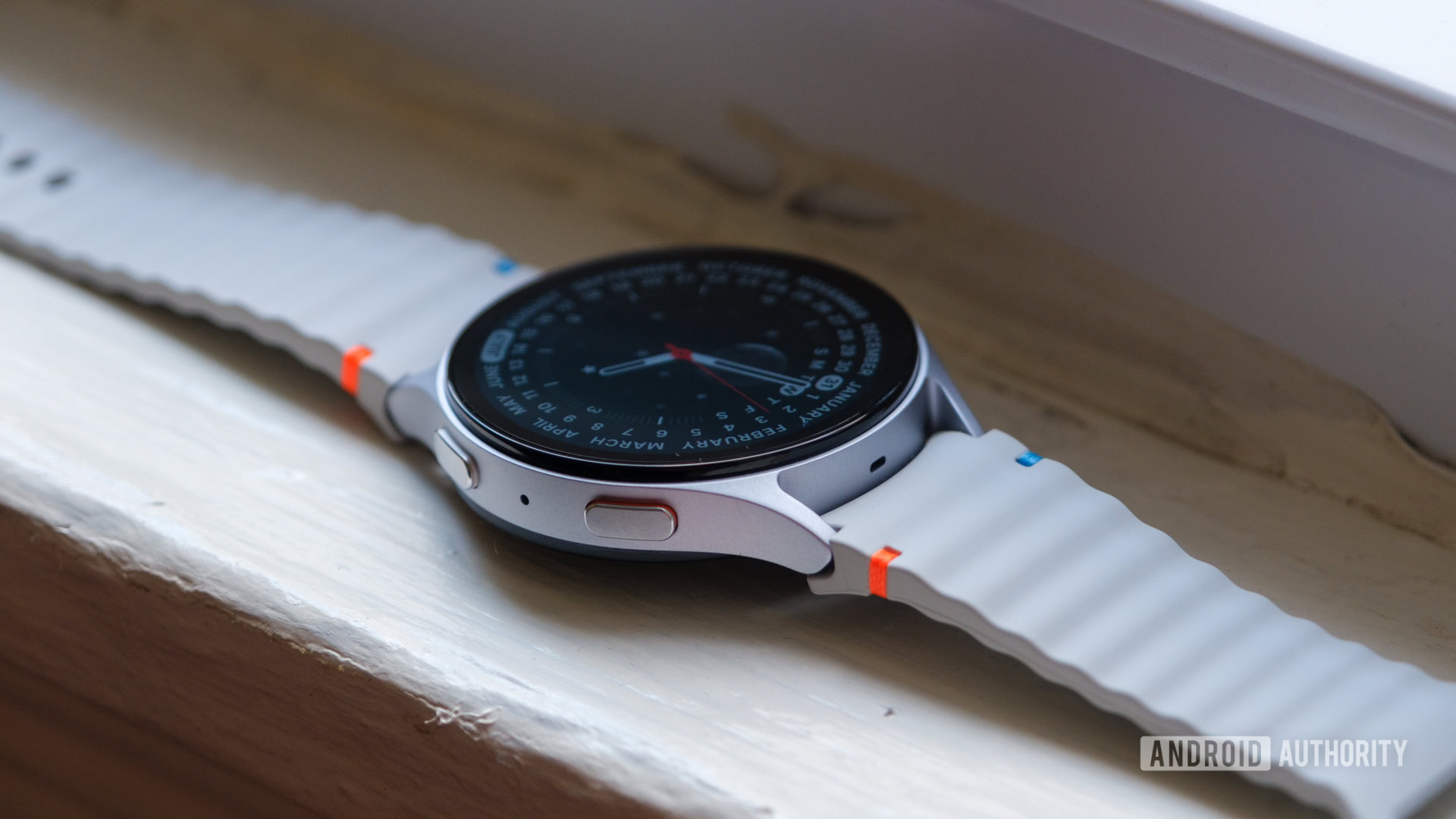
Ryan Haines / Android Authority
Samsung hasn’t changed its base Galaxy Watch design in a few years — at least since the Galaxy Watch 4 — and you know what? I’m okay with that. It was already a good-looking wearable that was equally stylish and functional, and Samsung has only refined its design since then. Its AMOLED panels have gotten bigger, its bezels have slimmed down, and it’s shaken up the controls a time or two, but the Galaxy Watch 7 still feels familiar as soon as you strap it on your wrist. In fact, the last Samsung wearable I spent much time with was the Galaxy Watch 4, yet I feel like I can jump into this new model like no time has passed.
In a world where smartwatches are trending maximalist (including Samsung’s own now with the Ultra’s arrival), the Galaxy Watch 7’s unassuming, minimalist design feels like a breath of fresh air. Don’t get me wrong, I know I’m part of the problem — I almost always have a bulky, do-it-all Garmin GPS watch on my wrist because I barely have to charge it, but I’m glad Samsung isn’t catering exclusively to the likes of me. I mean, changing from something so sizable to something so slim makes me appreciate the already comfortable design that much more. Wearing the Galaxy Watch 7 feels almost like wearing a version of a classic Wear OS watch like the Moto 360, only that wasn’t abandoned and instead reached its final form — smooth, responsive, watch-shaped.
I'm glad Samsung hasn't moved away from its sleek, stylish, circular design.
On top of that, I’d think twice about wearing most of my GPS watches to a formal occasion like a wedding, but I’d have no problem strapping on the Galaxy Watch 7 — with the right watch face, of course. Samsung’s commitment to its round AMOLED panel even means I can jump right back to some of my old favorite faces. I’ll dip into the Endangered Animals face now and then, or sometimes I’ll roll with the Steps Challenge face (especially on days when I run), but I’ve mostly been enjoying Samsung’s Perpetual face. It’s… crowded, to say the least, cramming the day and month around the edges, as well as the phase of the moon in the center. Maybe the predominantly black background is just a way to show Samsung’s deep AMOLED colors, but it works for me.
There is, however, one thing that Samsung changed about its Galaxy Watch 7 design: The Digital Bezel is no more, and I’m disappointed. It’s a feature I remember from as far back as the original Galaxy Watch Active, and now it’s just gone. We had some issues with its reliability on the Galaxy Watch 6 series, but I would have rather Samsung tried to fix it than give up. There’s no option for a rotating physical bezel on the Galaxy Watch 7, either — you have to go back a generation and grab the Galaxy Watch 6 Classic instead.
In its place, the Galaxy Watch 7 uses a home and back button for tactile navigation, while you’ll have to swipe through the display for everything else. The new controls work just fine — they’re more in line with what most smartwatches use — but there was something so satisfying about whipping your finger around the edge of the face to scroll up and down.
Galaxy AI on Galaxy Watch is all the upgrade I needed
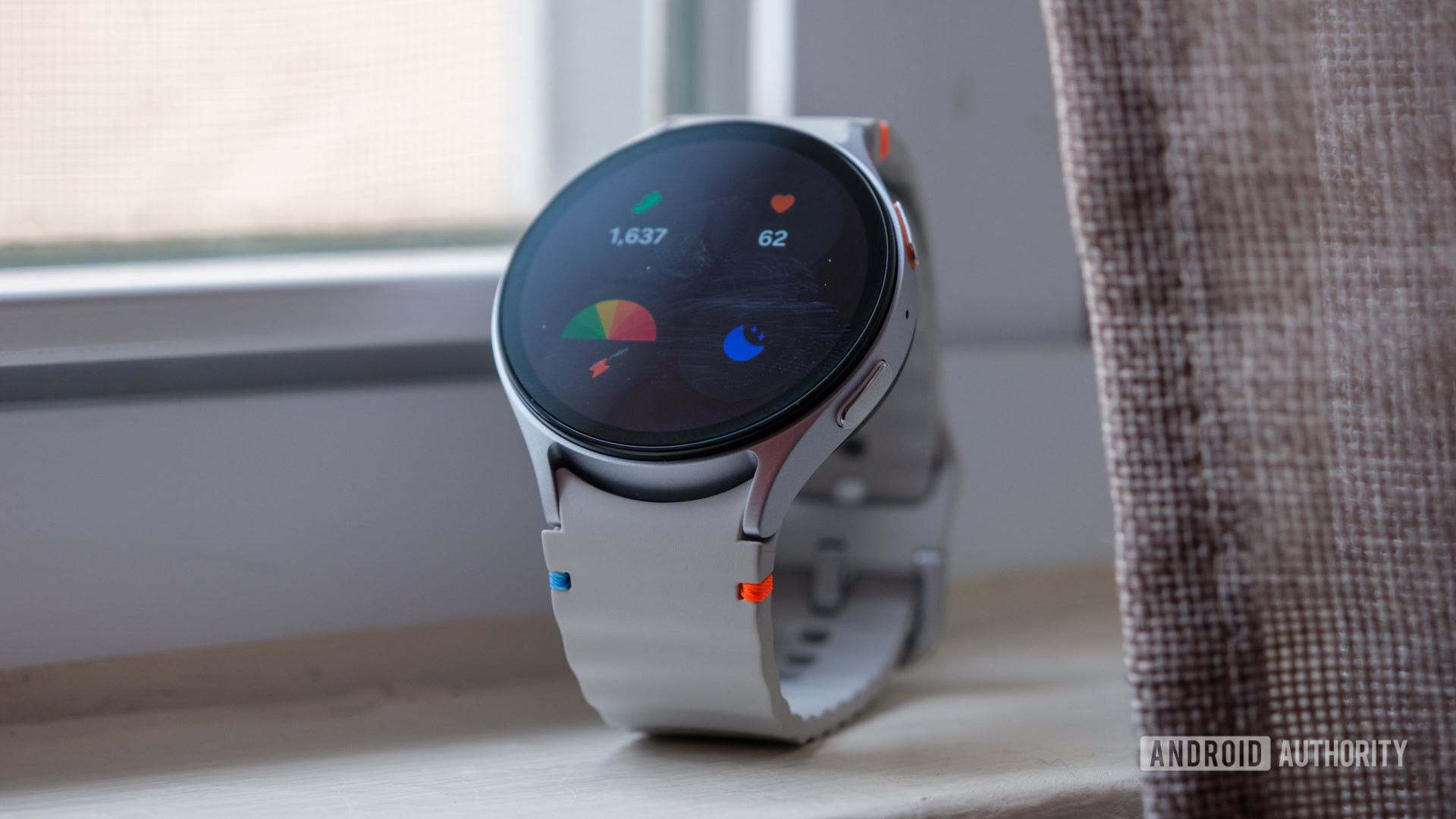
Ryan Haines / Android Authority
While the Galaxy Watch 7 may look like a forgotten update, some of the features hidden inside confirm that it isn’t true. Yes, Samsung spent most of its time introducing Galaxy AI features and health updates while talking about the Galaxy Watch Ultra instead, but wouldn’t you? After all, the shiny new updates sound more exciting on a shiny new watch than sprinkled in on a form factor that’s already familiar. However, while Samsung may not have talked about its updates in relation to the Galaxy Watch 7, I’m happy to report that Galaxy AI is the meaningful update this wearable needed to remain a top-tier fitness tracker.
Yes, it’s time to talk about Samsung’s updated approach to health tracking. I’ll readily admit that I haven’t been convinced by most of the generative AI features that dot flagship Android phones right now. There’s simply not enough polish on the Portrait Studio for me to use it, and Gemini hasn’t quite taken Google Assistant out of my pocket, but I think that Samsung infusing its Galaxy Watch 7 with Galaxy AI might be what finally gets me onboard. I know, I’m as surprised as you are.
Samsung's Energy Score is like Garmin's Body Battery, but much easier to improve upon.
What largely won me over is a metric Samsung is calling the Energy Score. It’s like Garmin’s Body Battery, which I check almost daily. Energy Score combines your sleep, the previous day’s activity, and a few other data points to show how you might feel on a given day. However, whereas the Body Battery simply gives you an overall reading and a bunch of data points, Samsung’s Energy Score breaks down each part of its readout to suggest how to improve your score.
My Energy Score readout isn’t quite perfect — I don’t always work out with the Galaxy Watch 7 on due to my training plan being on my Coros Pace 3, and I can’t always get the watch band tight enough on the 44mm case — but it’s more digestible than some other measurements and much more useful than Galaxy AI features like doodling a UFO over a baseball stadium and watching it come to life in Sketch to Image.
Samsung’s Galaxy AI also lets you compete against yourself in a few outdoor activities — at least in very specific cases. If you have a regular running or cycling route, you can use your Galaxy Watch 7 to race against a ghost version of yourself from the last two weeks, battling over pace and heart rate to see how you improve over time. It’s a clever feature that I think solo runners or cyclists would benefit from as a way to motivate themselves, but I also see problems with it. It’s not healthy to compete against yourself every single day, as pushing yourself too far can lead to injury. But, if you’re just starting a running journey, it’s a good way to get yourself out the door and only worry about your own previous efforts.
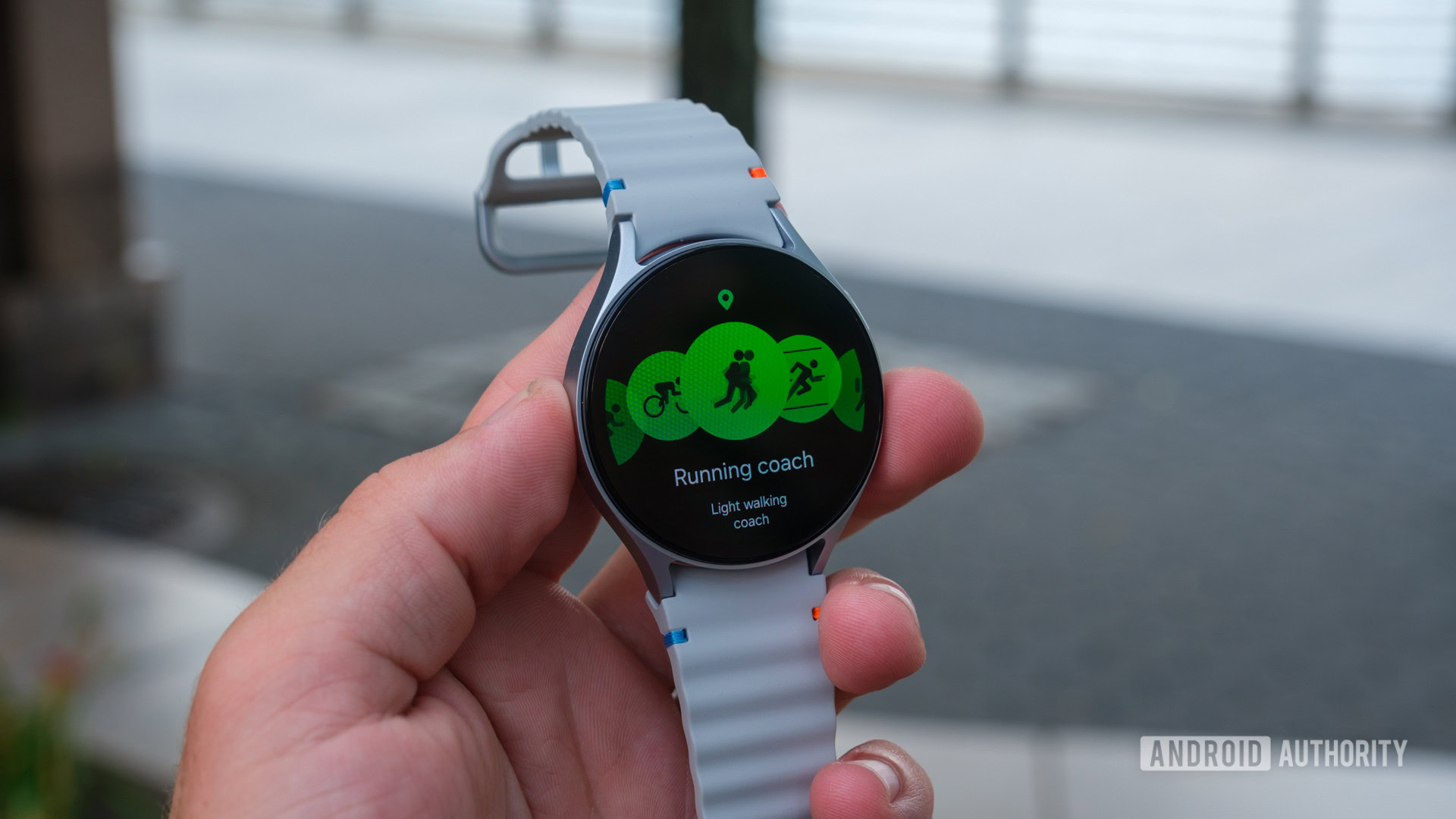
Ryan Haines / Android Authority
Some of Samsung’s other Galaxy AI updates seem like they should be useful, but they’re a little trickier for me to test out. Sleep apnea detection, for example, would be incredibly useful if you think you might suffer from the condition, but I already know that I don’t, so I don’t have much use for it.
Also, keep in mind that you need a compatible Samsung phone and to be signed in with your Samsung account to use all of the Galaxy AI tracking features. You can still track activities, sleep, and heart rate with other compatible phones, but the more in-depth insights, like sleep apnea detection and Energy Score, are exclusive to Samsung phones. Other non-health Galaxy AI features, like Suggested Replies in Google Messages and voice-to-text summaries from recordings made on your Galaxy Watch 7, require a Samsung phone, too.
The hidden sensory overhaul
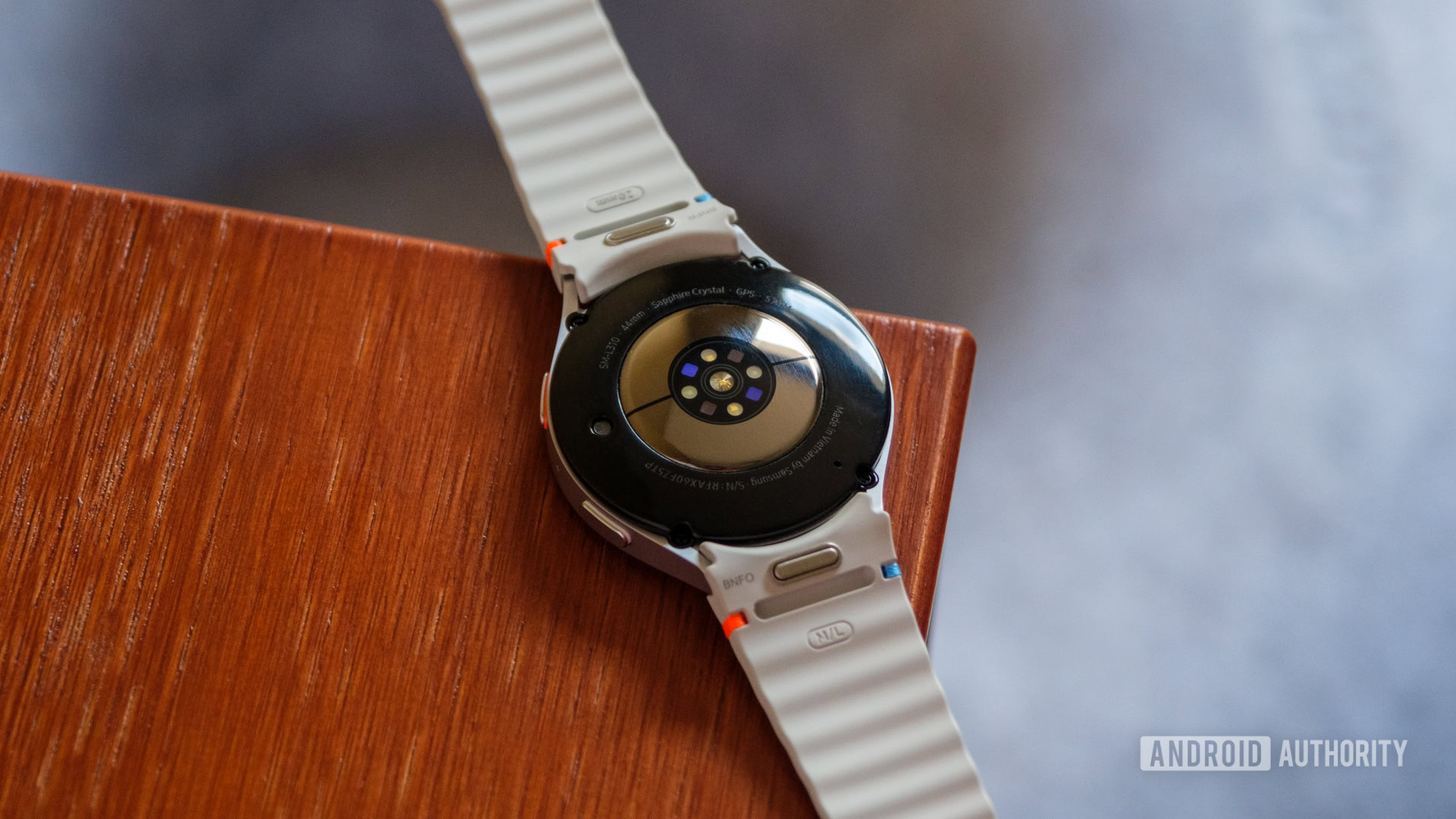
Ryan Haines / Android Authority
One thing that worried me when Samsung rolled out what looked like an unchanged Galaxy Watch 7 was whether or not it had quietly fixed one of our main issues with its predecessor — the sensors. Although Samsung had no problems packing the Galaxy Watch 6 series with impressive features, we often struggled to get spot-on heart rate data during our activities, and we noticed that the single-band GPS wasn’t always accurate between tall buildings and beneath trees. Well, I’m happy to report that Samsung has largely righted its wrongs.
For starters, single-frequency GPS tracking is out, and dual-frequency tracking is in. Samsung upgraded from its previous L1 frequency to the more popular (and more accurate) L1 plus L5 combination that we often see on GPS watches, which puts its Galaxy Watch 7 on much better footing against the likes of the Coros Pace 3 and gives it an advantage over the Apple Watch Series 9 which still only has single-frequency L1 tracking. But it’s easy to say that the watch is more accurate; now it’s time to test it out.
Two GPS frequencies are better than one, but tall buildings are still tricky.
So, I strapped my Coros Pace 3 on one wrist and my Galaxy Watch 7 on the other and headed to a weekly run club. Our weekly route has a good mix of waterfront miles and dips between tall buildings, so I figured it would be a good chance to see whether or not the dual-frequency setup could keep up with a GPS watch I wear every day. The results are… mixed, to say the least. Even though both the Galaxy Watch 7 and Coros Pace 3 were spot-on while heading around the wide-open piers in Baltimore’s Inner Harbor, both struggled mightily when faced with a stretch around taller buildings.
The map to the left is pretty much perfect, with slight variations around the piers because each watch was on a different wrist, while the map to the right is a bit of a mess. It not only put me inside the walls of the building with both watches but also dropped me in the harbor for a second with the Galaxy Watch 7 as I went around the first corner. The Galaxy Watch 7 also recorded my run as both faster and slightly longer than the Coros Pace 3, picking up an extra 0.07 of a mile in the last 14 seconds. So, while I’d say the dual-frequency GPS is overall a bit more accurate than the Galaxy Watch 6, it’s still not perfect — but neither is a similarly priced GPS watch.
Samsung also completely overhauled its BioActive sensor — an announcement that it made prior to even launching the Galaxy Watch 7. It claims to have doubled the performance of its existing photodiodes, thereby decreasing the number needed and freeing up space to add blue, yellow, violet, and ultraviolet LEDs to the existing array of green, red, and infrared LEDs. This should mean that the Galaxy Watch 7 can track heart rate, sleep quality, blood pressure, and stress levels more accurately, as well as a claimed improvement of 30% more accurate tracking during workouts.
Since I already had two watches on for a weekly run club and would probably get a few funny looks, I figured adding another sensor to the mix wouldn’t do any harm. So, I pulled the Coros heart rate monitor around my bicep and got comfortable with feeling like a science experiment.

Ryan Haines / Android Authority
Once again, the updated sensor setup is close to that of my Coros Pace 3 and heart rate monitor, but not quite perfect. I cut out a 15-minute stretch where I didn’t have to stop for any traffic lights, and the two wearables were within a heartbeat (or two) of each other for the entire duration. The Galaxy Watch 7 skews a bit higher across the entire range, peaking at 162 beats per minute (bpm) at the 27-minute mark to the Pace 3’s peak of 160bpm at the same point, but both watches finished with the same overall average of 153bpm across my entire 45-minute run. As far as I’m concerned, that’s enough consistent accuracy for most people to trust the Galaxy Watch 7 in a way they couldn’t quite count on its predecessor.
Samsung Galaxy Watch 7 review: Why you should still buy it
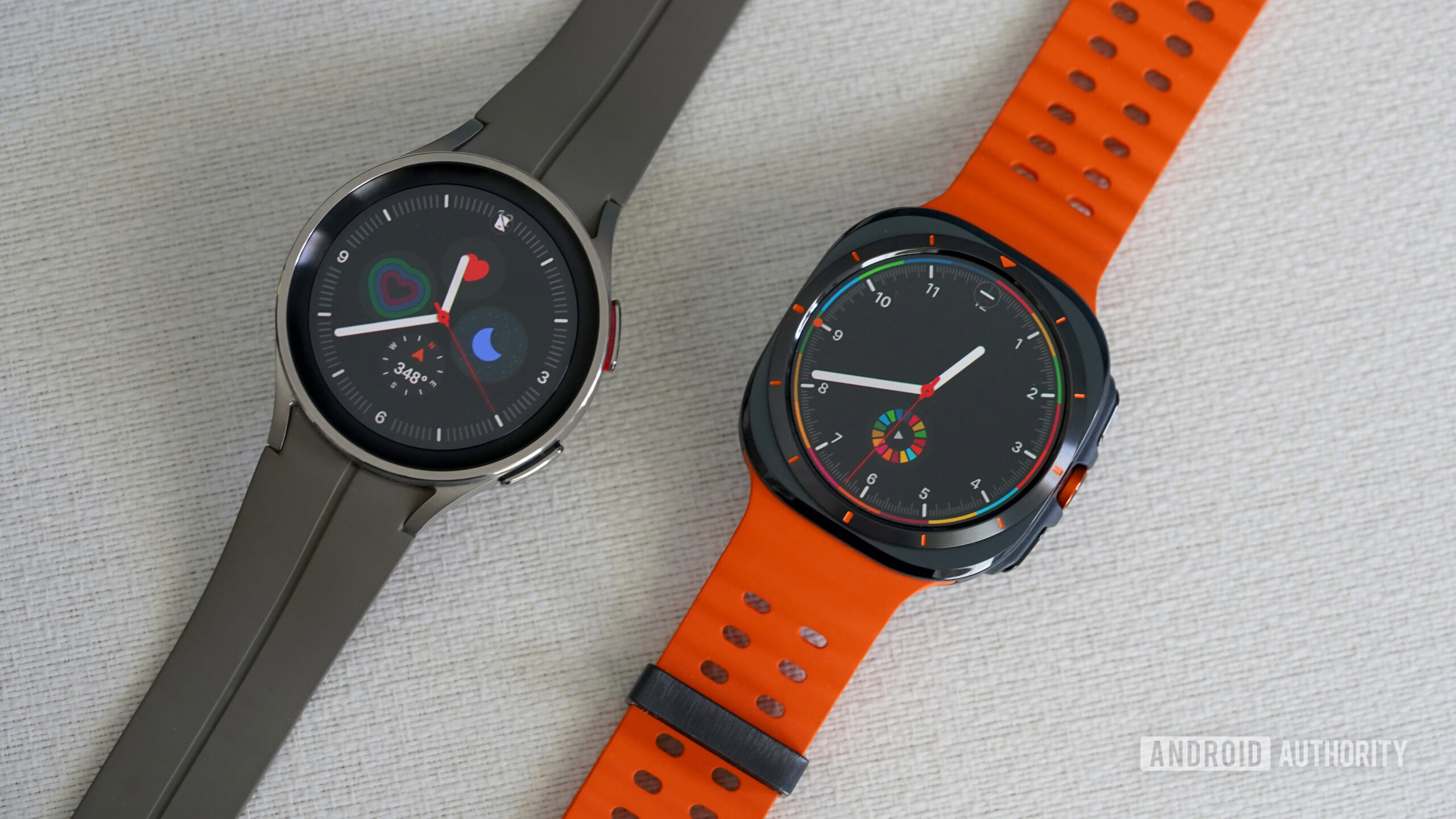
Kaitlyn Cimino / Android Authority
Galaxy Watch 7 (left), Galaxy Watch Ultra (right)
It’s funny — I don’t usually think that you should buy something that feels like it’s been forgotten about. But, when you look at the Galaxy Watch 7, you realize that Samsung didn’t really forget about it. Instead, it kept a design that already worked (well, except for the digital bezel) and spent most of its time updating the health-tracking metrics with the power of Galaxy AI. In my eyes, that’s all it needed to do.
I’m also happy to recommend the Galaxy Watch 7 for the sheer fact that most people probably don’t need the Galaxy Watch Ultra. Like the Apple Watch Ultra (which it bears more than a passing resemblance to), Samsung’s top-tier watch has its biggest battery, toughest build quality, and highest price tag — most of which your average user doesn’t need. I’ve had no issues wearing the Galaxy Watch 7 for runs on back-to-back days without charging, and nothing about the new squircle design makes the Watch Ultra feel like something I want to wear every day.
The Galaxy Watch 7, on the other hand, is a simple watch that checks all of the boxes that your average Galaxy fan needs and does so at a price that feels much more comfortable in the face of the far more expensive Galaxy Watch Ultra ($649.99 at Amazon). You could maybe complain about the fact that Samsung hasn’t bumped its battery capacity (the 44mm case still houses a 425mAh cell, and the 40mm version only packs 300mAh), but I think the more efficient 3nm processor makes up for it. I regularly get two days of juice out of my watch before I need a charger, and even then, I can get back to almost a full cell while I eat breakfast and shower.
The Galaxy Watch 7 proves that sometimes the best updates are the ones you don't see at first.
While some might find Wear OS 5 a bit underwhelming, I quite like what Samsung is doing. It lets each widget stretch across the AMOLED panel, making it easy to read your running metrics and the current weather and respond to texts using Galaxy AI-powered suggestions with even the fattest of fingers (it’s me, I have those fingers) without accidentally bumping other buttons. When you compare it to the rounded pebble of the Pixel Watch ($349.99 at Amazon), Samsung’s large but simple interface just makes sense.
So, if you’re already in the Samsung Galaxy and looking for a new smartwatch, it’s tough to look past the Galaxy Watch 7 (and its optional LTE-enabled version, which costs a little bit extra). It might not be a complete evolution in wearable technology, but sometimes, the best improvements are the ones you don’t see right away.


Samsung Galaxy Watch 7
Enhanced storage • Sleep apnea detection • Stylish design
Comfortable and capable
Available in two sizes, the Samsung Galaxy Watch 7 is a refinement over older Galaxy Watches. A rich set of health and fitness tracking features include Sleep Apnea detection. Available in 40mm and 44mm sizes, three band materials to choose from, and now up to 32GB of internal storage for all your apps and music.

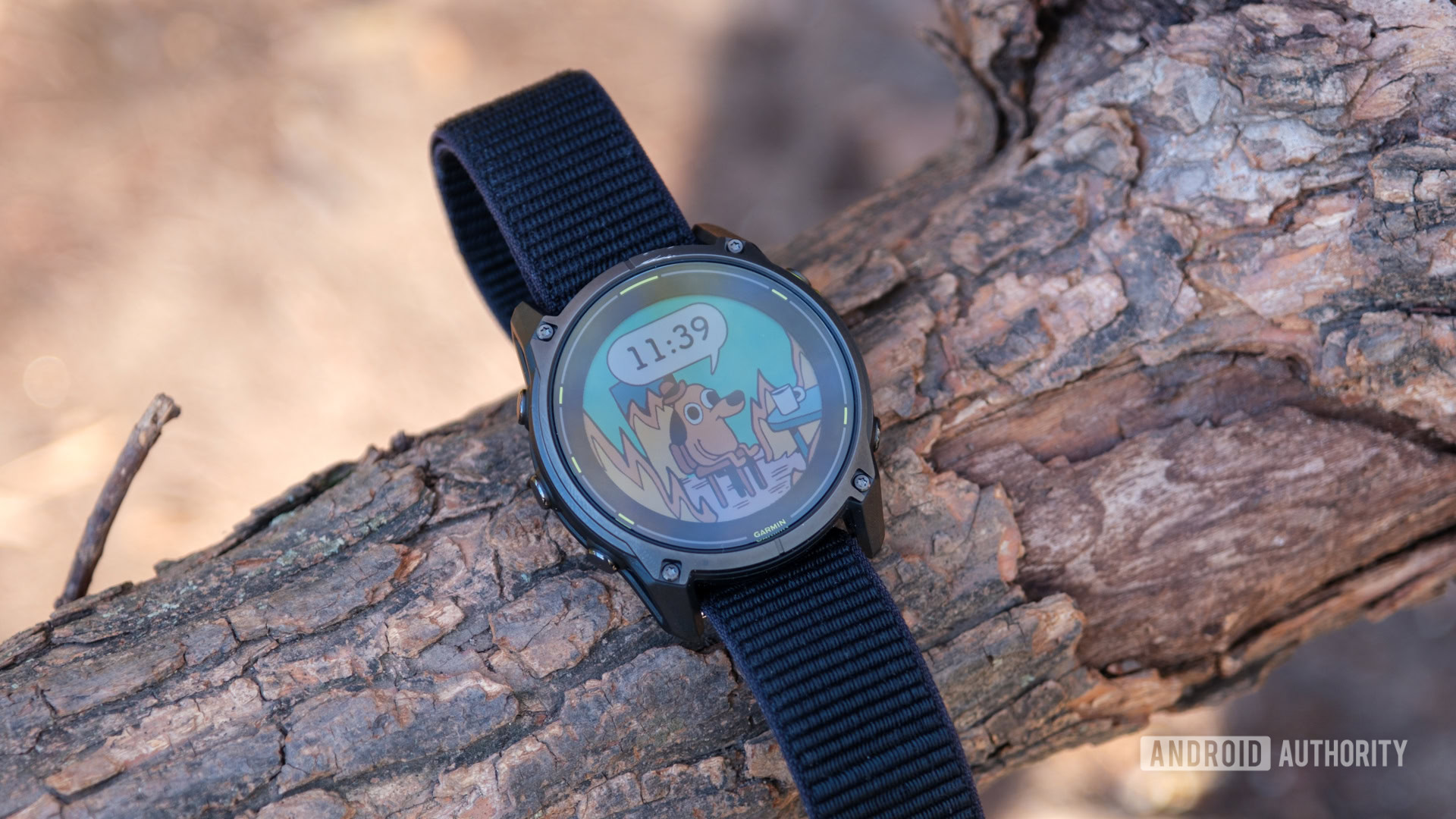
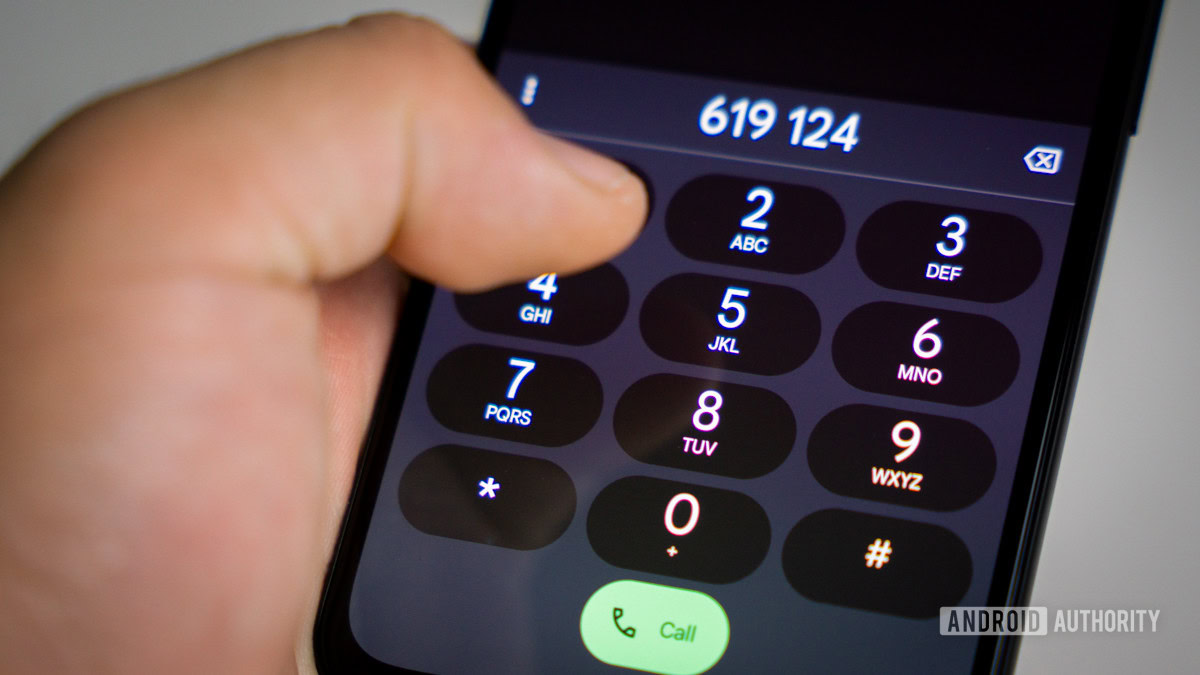




 English (US) ·
English (US) ·